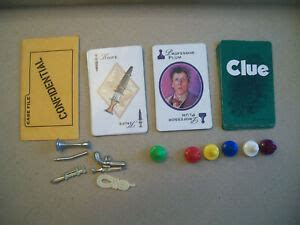Did the Mystery Writer Pick the Right Killer?
Recently, I was watching a television production, which will remain nameless in order to avoid spoilers. As I went through the episodes, I realized that there were two ways that the narrative could resolve. If the show picked one killer, it would fit with the themes of the story and perhaps the political messaging being expressed through the tale. Done properly, it could have dramatic heft and impact, but it would not be satisfying from a critical perspective, because as a solution to a mystery, it would’ve been, well, just too obvious.
Alternatively, there was another suspect, a character whose purpose in the drama wasn’t clear, and who was never the target of suspicion, but if one extrapolated a potential motive from some storylines and the behavior of the victim, one could deduce this character’s motive. Had the second suspect been identified as the killer, the ending would have been surprising and satisfying.
The show went with the first option, and the end result left a rather hollow, flat feeling to an otherwise fine production. It struck me that picking a killer is a lot harder than a lot of critics think. When crafting a fair play whodunit, the murderer cannot be too obvious. One has to consider the person to be a potential murderer, but one also has to be able to feel fine if the suspect is innocent and is allowed to go on living a normal life. Too often, writers fill a story with characters so foul and unpleasant that you want all of them to go to jail at the end, and when the others walk away free, it just feels wrong.
I once heard a rumor that some writers on Law & Order were divorced women who loved to model the murderers after their ex-husbands. Maybe it’s cathartic for the writer to unload personal feelings on a fictional character, but the heavy-handed attempts to make a character villainous ruin the mystery aspect, as it’s so clear who the villain is because the whole story gives you reason after reason why the character is a terrible person. Some characters are supposedly “born to be victims.” Others are “born to be killers.” I’ve lost track of the number of times when I realize twenty pages into a book or twenty minutes in a show who the murderer is, because the author hates him so much.
Most writers don’t understand that the reveal of a character as a murder has to maintain a level of psychological consistency. After the denouement, a well-written mystery reveals that the character is exactly the same person you came to know over the course of the novel, only now you know for certain he’s a murderer. Agatha Christie knew how to make this work. Weak writers produce a character who’s the world’s nicest guy for ninety-five percent of the book, and then in the climax, his character spins around a hundred eighty degrees and becomes a foaming-at-the-mouth psychopathic violent madman. It doesn’t work, because the capacity for evil comes out of nowhere as opposed to having the character flaws discreetly illustrated over the course of the book.
A lot of authors think you can treat a whodunit like a game of Clue, where the villain can be drawn at random from a pool of suspects. But that doesn’t work. In a good mystery, the character of the killer has to reflect the themes of the book and the actions taken have to be plausible based on what we know about the character. It’s tricky, but the best mysteries work because they choose their killers well.
When was the last time you read a book or saw a TV program that was marred by a poor selection of killer?
–Chris Chan
Chris Chan’s first book, Sherlock & Irene: The Secret Truth Behind “A Scandal in Bohemia” was released on August 27th from MX Publishing, and is available for sale at Amazon.com and the MX Publishing website, as well as at Book Depository (with free worldwide shipping there). It is also available in a Kindle edition.





No comments:
Post a Comment